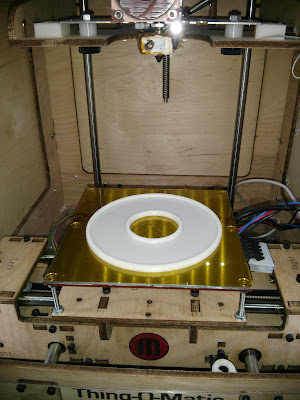Epix's SV5C10
is a great camera for those wanting to develop solid computer vision
systems. I've used them on several systems with great success, on both
Windows and Linux machines, and appreciate the tolerance of their
software and hardware to changes in the Linux kernel and the well
documented API. Their frame grabber cards use Altera FPGAs, which
creates good feelings, having used both Xilinx and Altera products and
greatly preferring Altera's much nicer development environment. The few
times that I've had minor problems, someone at Epix has always been fast
to provide a solution.
Before using the Epix cameras, I would capture stills using standard
point-n-shoot or DSLR cameras, tethered to a computer and an API
provided by the camera maker, generally Canon. This worked but the Canon
API is unsupported, which also means poorly documented, and, at least
at that time, not available for Linux. Using the consumer cameras for
scientific work is a bit worrisome as well because it's never completely
clear what the camera may be doing to the image, even in raw mode.
These problems do not exist with the Epix cameras, and while slightly
more expensive than the consumer cameras, the cost is very quickly
recouped in reduced programming time and maintenance. Supporting the
consumer cameras through the years as models came and went was a big
time sink.
In a recent project, a camera was positioned co-linearly between the
subject and the lights, resulting in some backlighting glare. To block
the glaring part of the light, a small baffle was made. No significant
change in exposure time is needed as little light is actually being
blocked. The rough diameter was found by prototyping with paper models
attached with tape.
The baffle was printed on the Thing-O-Matic, and added to the end of the
lens with an interference fit. The main disk of the baffle is thin with
thickened inner and outer rings for support. The inner diameter was
bored on a lathe to true it and achieve the correct interference fit.
Without boring, to obtain such tight tolerances, quite a bit of
trial-and-error would be required, due to shrinkage and machine
precision. And while the entire baffle could have been made on the
lathe, the cost would have been much higher due to wasted material, not
to mention being a large for my little lathe.
In addition to the baffle, a small standoff was also made from 1 1/2"
steel rod stock, trued, knurled, and 1/4"-20 clearance hole drilled.
Because stock of the appropriate size was available, and both ends
needed to be very parallel, the lathe was used. The knurling is just for
appearance.
Subtractive machining (lathe, mill, etc.) and additive machining (3d
printing) work well together, and provide alternatives for minimizing
cost and machining time, during prototyping. And in this case with tools
available to many people, not just industry.

